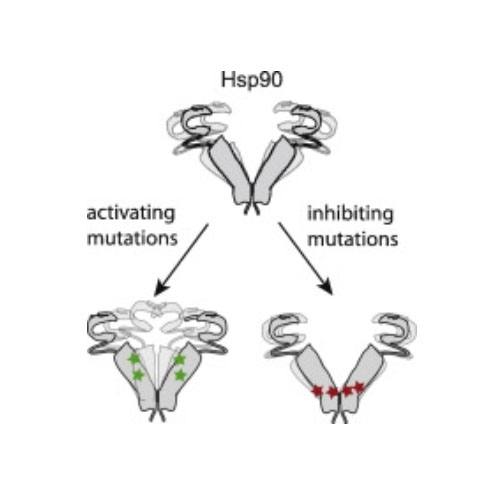Allosteric Regulation Points Control the Conformational Dynamics of the Molecular Chaperone Hsp90
20-Sep-2016
Journal of Molecular Biology, Volume 428, Issue 22, Pages 4559–4571, http://dx.doi.org/10.1016/j.jmb.2016.09.014
Journal of Molecular Biology, online article
Heat shock protein 90 (Hsp90) is an ATP-dependent molecular chaperone responsible for the activation, maturation, and trafficking of several hundred client proteins in the cell. It is well known that (but not understood how) residues far away from Hsp90's nucleotide binding pocket can regulate its ATPase activity, a phenomenon called allosteric regulation. Here, the computational design of allosteric mutations was combined with in vitro and in vivo experiments to unravel nucleotide-responsive hot spots in the regulation of Hsp90. With this approach, we identified both activating and inhibiting regulation points and show that changes in those amino acids affect the conformational dynamics and ATPase activity of Hsp90 in vitro. Our observations that activating mutations loosen and inhibiting mutations rigidify the protein explain for the first time how Hsp90 changes in response to allosteric mutations. Additionally, mutations of these allosteric regulation points can be controlled by the interplay with Hsp90 co-chaperones, thus providing cells with an efficient mechanism of modifying Hsp90's intrinsic properties via different layers of regulation. Altogether, our results show that a framework for transmitting conformational information exists in the Hsp90 structure.











